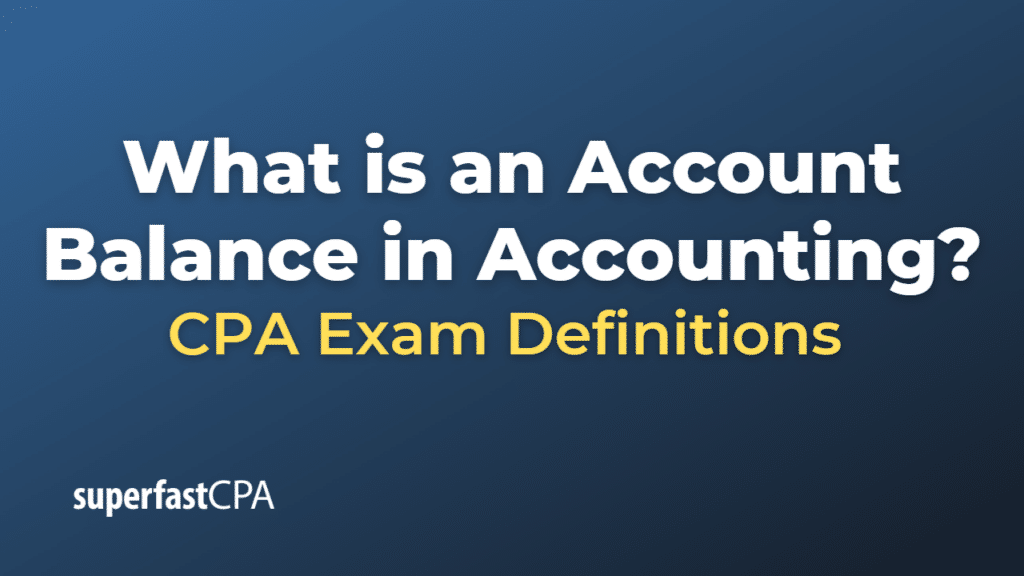Account Balance in Accounting
An account balance in accounting refers to the difference between the total debits and total credits recorded in a specific account in a company’s general ledger. The account balance represents the net value of the account at a given point in time, and it helps businesses monitor their financial position and performance.
Account balances can be either positive or negative, depending on the account type and the transactions recorded. Here’s a brief overview of how account balances work for different account types:
- Asset accounts: These accounts have a normal debit balance. When the total debits exceed the total credits, the account has a positive balance, indicating the value of the asset owned or controlled by the company.
- Liability accounts: These accounts have a normal credit balance. When the total credits exceed the total debits, the account has a positive balance, indicating the amount owed by the company to others.
- Equity accounts: Equity accounts, such as common stock, additional paid-in capital, and retained earnings, have a normal credit balance. A positive balance in these accounts indicates the owners’ residual interest in the company’s assets after deducting liabilities.
- Revenue accounts: These accounts have a normal credit balance. A positive balance in a revenue account represents the income generated by a company through its regular business activities.
- Expense accounts: Expense accounts have a normal debit balance. A positive balance in an expense account indicates the costs incurred by a company in the course of operating its business.
Account balances are essential for preparing financial statements, such as the balance sheet and income statement, which provide insights into a company’s financial health. Regularly reviewing and reconciling account balances helps ensure the accuracy and reliability of financial records, supporting effective decision-making and internal control processes.
Example of an Account Balance
Let’s consider a small business, “LMN Bookstore,” and examine the account balances for two of its accounts: Cash (an asset account) and Accounts Payable (a liability account).
At the beginning of the month, the account balances are as follows:
- Cash: $10,000 (debit balance)
- Accounts Payable: $5,000 (credit balance)
During the month, the following transactions occur:
Transaction 1: LMN Bookstore purchases $2,000 worth of books from a supplier on credit.
- No change to the Cash account.
- Accounts Payable increases by $2,000 (credit).
Transaction 2: LMN Bookstore sells books worth $3,500 for cash.
- Cash increases by $3,500 (debit).
- No change to the Accounts Payable account.
Transaction 3: LMN Bookstore pays $1,500 to the supplier to reduce its accounts payable balance.
- Cash decreases by $1,500 (credit).
- Accounts Payable decreases by $1,500 (debit).
After recording these transactions, the new account balances are:
- Cash:
- Beginning balance: $10,000
- Increase from sales: +$3,500
- Decrease from payment to supplier: -$1,500
- Ending balance: $12,000 (debit balance)
- Accounts Payable:
- Beginning balance: $5,000
- Increase from book purchase: +$2,000
- Decrease from payment to supplier: -$1,500
- Ending balance: $5,500 (credit balance)
In this example, the account balances for Cash and Accounts Payable reflect the net results of the transactions that occurred during the month. The Cash account has a positive debit balance of $12,000, representing the amount of cash owned by LMN Bookstore, and the Accounts Payable account has a positive credit balance of $5,500, representing the amount owed by LMN Bookstore to its supplier. These ending account balances will be used to prepare the company’s financial statements and inform management about the company’s financial position.













